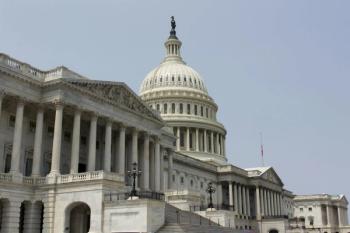
Addressing the Hesitancy: Looking at Allergic Reactions to COVID-19 Vaccines
There are many reasons for COVID-19 vaccine hesitancy, including its side effects. Here is an examination of side effects in those who have been vaccinated.
Since the beginning of the COVID-19 pandemic, there have been over
As of earlier this week, the United States had delivered over 135 million doses, administered over 107 million doses, and according to the US Centers for Disease Control and Prevention (CDC), 11.3% of the total population is fully vaccinated. Currently, 21% of the total U.S. population has received at least one dose and 35% of those 65 years or older have been fully vaccinated within the United States.
One of the hurdles in vaccinating an entire population is hesitancy and some of the most hard hit areas, like rural communities, are also areas where hesitancy can be prevalent and profoundly impacting. A
There are many reasons for vaccine hesitancy and in the case of COVID-19, some include belief that the seriousness of virus has been exaggerated, the process was unsafely rushed, lack of concern for transmitting the virus, but also that there are adverse effects to getting vaccinated. This last concern is one in particular that a team of
In their publication within JAMA, they evaluated acute allergic reactions of mRNA COVID-19 vaccines by studying employees at Mass General Brigham who received their first dose of the vaccine, with a follow-up. Of the nearly 65,000 employees who received their first dose (of either Pfizer-BioNTech or Moderna), 81% completed at least one symptom survey.
The authors reported their findings from the survey. “Acute allergic reactions were reported by 1365 employees overall (2.10% [95% CI, 1.99%-2.22%]), more frequently with the Moderna vaccine compared with Pfizer-BioNTech (2.20% [95% CI, 2.06%-2.35%] vs 1.95% [95% CI, 1.79%-2.13%]; P = .03). Anaphylaxis was confirmed in 16 employees (0.025% [95% CI, 0.014%-0.040%]): 7 cases from the Pfizer-BioNTech vaccine (0.027% [95% CI, 0.011%-0.056%]) and 9 cases from the Moderna vaccine (0.023% [95% CI, 0.011%-0.044%]) (P = .76).”
Those individuals who experienced anaphylaxis had a mean age of 41 years and 94% were female, with 63% having a prior allergy history and 31% having an anaphylaxis history. The mean time to onset of anaphylaxis was 17 minutes, with one admitted to an intensive care unit and 56% receiving intramuscular epinephrine.
All who experienced anaphylaxis recovered and in fact, 3 did not seek care. The authors emphasized that 98% of those in their prospective cohort study did not have any symptoms of an allergic reaction after receiving their vaccine and that a majority of those who did, had a history of allergies.
Ultimately, this study demonstrates the very limited allergic reactions to COVID mRNA vaccines and while it would be beneficial to collect additional data after the second dose for many, this is helpful in aggressing the concerns about potential for reactions of these new vaccines.
Newsletter
Stay ahead of emerging infectious disease threats with expert insights and breaking research. Subscribe now to get updates delivered straight to your inbox.































































































































































































































































































































